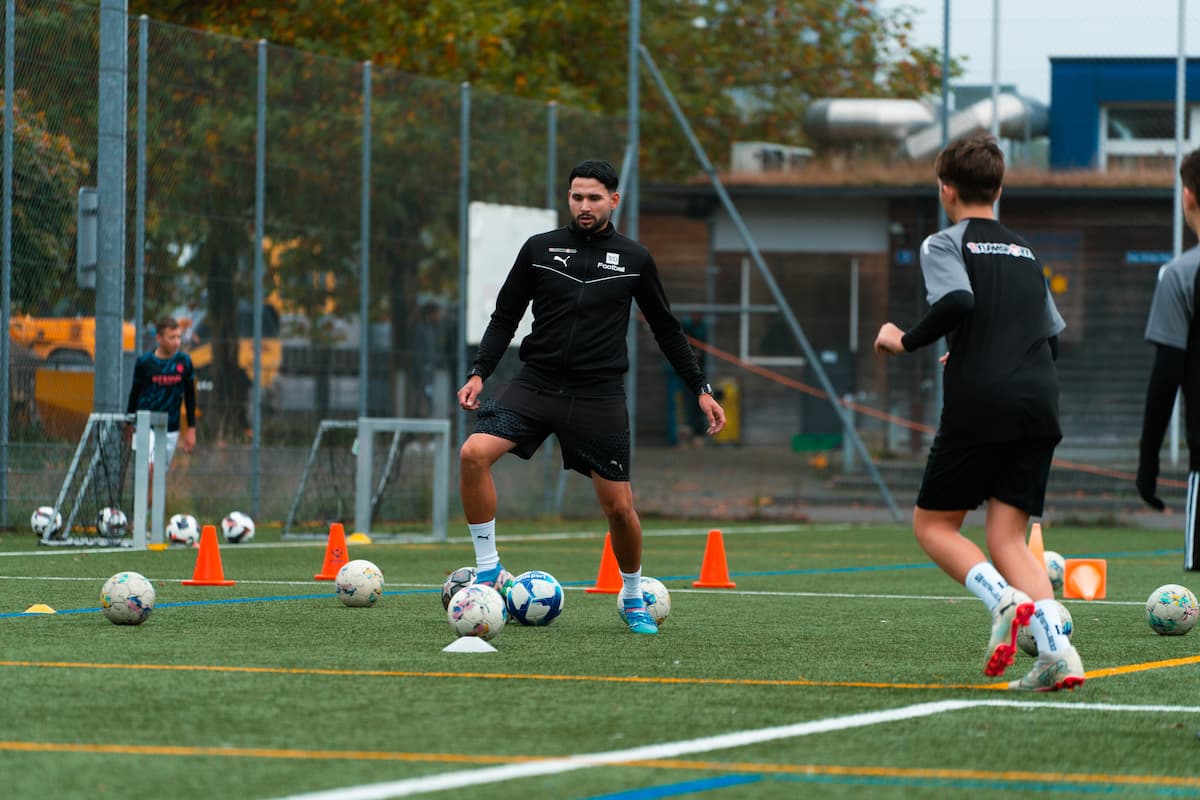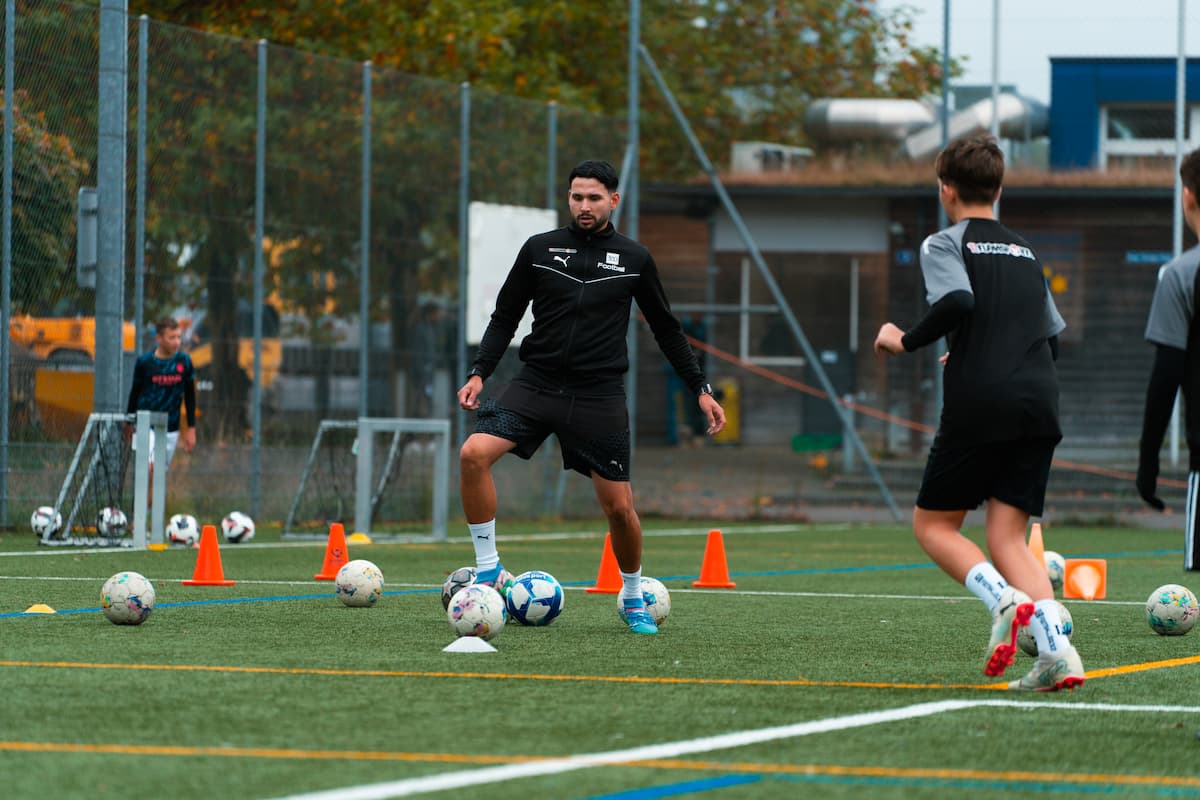What training goals should be pursued when preparing for football? Part 1
The aim of every preparation for the actual football preparation should be to optimally prepare the musculoskeletal system for the football-specific stresses and requirements. In this context, we need basic skills in the areas of:
- Passive joint mobility
- Muscle flexibility
- Active joint mobility
- Power
- Football-specific endurance
- Speed power
- bounce
All of these skill areas are required in football-specific challenges and should therefore be trained regularly. If we have functional disorders in one or more of these ability areas, this can lead to reduced physical performance and resilience. These functional disorders not only limit performance on the football field, but also lead to an increased risk of complaints and injuries due to the reduced resilience.
And that's exactly what we absolutely can't use when preparing for football! Every intensive and pain-free training session brings you a little closer to being in top shape at the start of the season!
For this reason, we pursue the following training goals when preparing for football:
1. Developing adequate passive joint mobility in the area:
- of the hip joint
- of the ankle joint
- the thoracic spine
These three body sections should definitely (!) have a minimum level of passive joint mobility. By passive joint mobility we mean the ability to move a joint within the greatest possible range of motion with the addition of an external force (gravity, partner, training device). That sounds complicated, but it isn't at all. In this context, a simple example is the splits exercise. Gravity causes the hip joint to move to its maximum end of movement, known as hip abduction, due to the body weight. Thus, the movement is not carried out by a specific muscle, but by gravity itself. If we have passive mobility restrictions in one or more of these body sections, this can lead to multiple incorrect loads on surrounding body structures (muscles, tendons, ligaments, etc.). From a certain point onwards, these incorrect loads can lead to reduced physical performance and also resilience, which increases the risk of complaints/injuries.
The causes of mobility restrictions in this context can be diverse. In most cases, incorrect muscle tension and muscle shortening in the corresponding areas of the body lead to limited passive joint mobility.
2. Developing adequate muscle flexibility in the area:
- of the hip joint
- the thigh muscles
- the calf muscles
As already mentioned, optimal muscle flexibility is necessary for adequate passive joint mobility and is therefore very important. However, most footballers have various limitations in the area of muscle flexibility. By muscle flexibility we mean the ability of a muscle to adapt to a joint or body movement in relation to its muscle length.
In this context, we distinguish between three different states of flexibility:
- Optimal position (positive): Muscle is in its middle position and can be specifically tensed (shortened) and lengthened (relaxed).
- Shortened (concentrically fixed = negative): Muscle is in a shortened position and can no longer be lengthened in a fully controlled manner.
- Lengthened (Eccentrically fixed = negative): Muscle is in a lengthened position and can no longer be shortened in a fully controlled manner.
Both extreme states (shortened and lengthened) are to be viewed negatively, as uneven/unfavorable stress can arise due to the muscular imbalance.
In this context, most footballers have limitations in the hip/thigh and calf muscles. These restrictions can not only lead to reduced performance, but also to an increased risk of complaints/injuries. As already mentioned, the muscular flexibility disorders can lead to one-sided strain, but also unfavorable movement patterns, which can lead to increased strain on local but also surrounding body structures (muscles, tendons, ligaments, etc.).
Muscle flexibility disorders in the area of the hip joint/thigh and calf muscles can lead to problems in the area:
- the lumbar spine (lower back)
- of the abdominal cavity
- the hip joint (groin, buttocks)
- of the thigh (adductors, front of thigh, back of thigh, outside of thigh)
- of the knee joint (kneecap, popliteal fossa, knee joint directly)
- of the foot (Achilles tendon, sole of the foot, back of the foot)
lead. For this reason, the hip/thigh and calf muscles should be at an optimal muscle length.
In the next part we will discuss the other body abilities active joint mobility, strength, football-specific endurance, speed strength and jumping power and their corresponding objectives.


